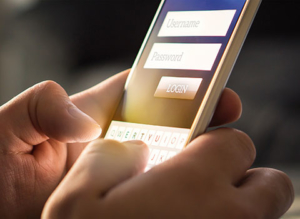How to be a Grandma Identity Thief Murderer
Lois Riess is a woman from Minnesota who police say shot her husband, went on the run, and then killed a woman in order to take on her identity. Here are some shocking facts about her:
 Riess Looked Like her Victim
Riess Looked Like her Victim
The woman Lois Riess killed, Pamela Hutchinson, looked like her. This is why Pamela lost her life. When the body was found, police said her ID, credit cards, cash, and car was gone. Police put out an arrest warrant for Riess, and then started hunting for her. Police say the women did not know each other.
Lois Riess Allegedly Killed Her Husband, Too
Pamela Hutchinson wasn’t the only one who has allegedly died at Riess’ hand. Lois’ husband, David Riess, is also dead. He was found in the couple’s Minnesota home with several gunshot wounds after two weeks of not showing up at work. David’s car was missing, as was $11,000 out of his business account. It is believed that Lois used the same gun to kill both of her victims. Though Lois originally took the couple’s Cadillac, it was found abandoned in Florida several days later.
Pamela Hutchinson and David Riess
Though she was killed in Fort Myers, Pamela Hutchinson didn’t live there; she lived in Bradenton, FL. She was in Fort Myers to spread the ashes of her husband who had recently passed away.
David, Lois’ husband, owned a commercial worm farm. He was a Navy veteran and loved boating, fishing, hunting, and spending time with his grandkids.
Lois Riess was a Gambler, and She Had an Interesting Nickname
According to reports, Lois Riess was a gambler, and had an addiction to gambling that eventually destroyed her family. It is said that she stole more than $100,000 from her sister, and had the nickname, “Losing Streak Lois.”
Lois Took a Road Trip After the Killings
After killing Pamela, detective believe that Lois left Florida and traveled through Alabama, Mississippi, Louisiana, and Texas. She was driving Pamela’s car, which she took after shooting the woman.
Before Lois was even captured, she was charged with the murder of both her husband, David, and Hutchinson. She is facing a first degree murder charge in Florida along with grand theft auto, grand theft, and criminal use of personal identification. She faces the death penalty if found guilty. As for the alleged murder of her husband, David, in Minnesota, murder charges are pending, so it’s likely that she will face two counts of first degree murder when all is said and done in this case.
Robert Siciliano personal security and identity theft expert and speaker is the author of Identity Theft Privacy: Security Protection and Fraud Prevention: Your Guide to Protecting Yourself from Identity Theft and Computer Fraud. See him knock’em dead in this Security Awareness Training video.

 Morna Brennen did this when she was 22. She and a few friends went to a bar and stayed there late.
Morna Brennen did this when she was 22. She and a few friends went to a bar and stayed there late. You know the drill. You go to a website and it says “Log In With Facebook.” or Google. Usually, it just takes a couple of clicks and no logging in with other usernames or passwords. However, when you do this, Facebook essentially becomes your online identity. This means that anyone who knows these credentials have access to your preferences, posts, and most importantly, your personal information. What’s more is that you might be unknowingly giving permission to a third party to access your profile, view your online activities, and get information about your friends.
You know the drill. You go to a website and it says “Log In With Facebook.” or Google. Usually, it just takes a couple of clicks and no logging in with other usernames or passwords. However, when you do this, Facebook essentially becomes your online identity. This means that anyone who knows these credentials have access to your preferences, posts, and most importantly, your personal information. What’s more is that you might be unknowingly giving permission to a third party to access your profile, view your online activities, and get information about your friends. Unusual Background Noise
Unusual Background Noise You know Larry Nassar; the sick creep who worked as the doctor for USA Gymnastics. With up to or more than 156 victims, he was convicted of 10 counts of first-degree criminal sexual conduct, and he was ultimately sentenced to 40 to 150 years in prison. 150 years isn’t enough. I hope prison is as horrible as him.
You know Larry Nassar; the sick creep who worked as the doctor for USA Gymnastics. With up to or more than 156 victims, he was convicted of 10 counts of first-degree criminal sexual conduct, and he was ultimately sentenced to 40 to 150 years in prison. 150 years isn’t enough. I hope prison is as horrible as him. Here are some tips that you can use to protect yourself:
Here are some tips that you can use to protect yourself: The man arrested is Gary Hartman, and he is accused of killing and raping 12-year old Michella Welch. Donald Ramsdell, the Tacoma Police Chief, has said that computer modeling, police techniques, and advances in DNA identification has led his team to arresting Hartman on June 20th.
The man arrested is Gary Hartman, and he is accused of killing and raping 12-year old Michella Welch. Donald Ramsdell, the Tacoma Police Chief, has said that computer modeling, police techniques, and advances in DNA identification has led his team to arresting Hartman on June 20th. Obtaining Your Free Credit Report
Obtaining Your Free Credit Report Fake Bitcoin Exchanges
Fake Bitcoin Exchanges























